Art World
Hong Kong Diary: Adrian Cheng, Josh Roth, Uli Sigg, and Galleries Galleries Galleries
Around town with the art world.
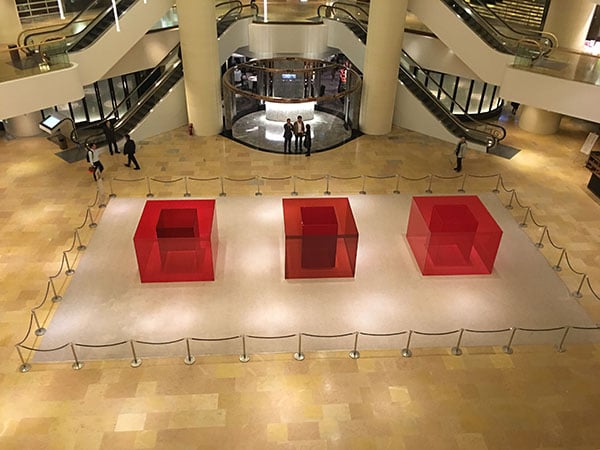
Around town with the art world.

Rozalia Jovanovic

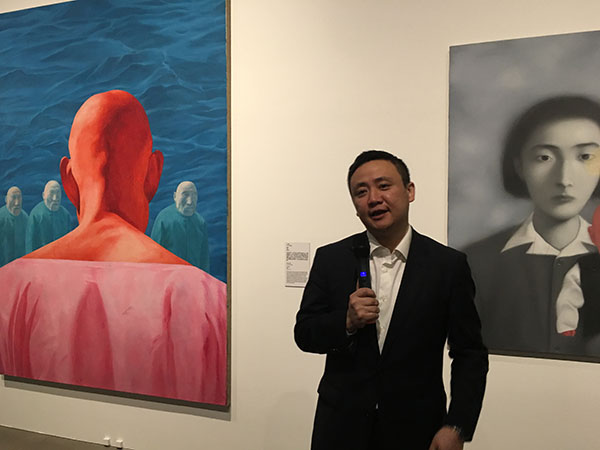
M+’s Pi Li giving a tour of the Sigg Collection show, which he curated.
Image: artnet News
During Art Basel Hong Kong, there were events around the city from the opening of the “M+ Sigg Collection: Four Decades of Chinese Contemporary Art” to gallery openings, dinners, and parties. Here’s a brief journal of things we saw.
Uli Sigg at the Opening of M+ Sigg Collection
“I was always interested in art from day one, because I had always been a collector, but of Western art before,” said Uli Sigg, businessman, collector, and former Swiss ambassador to China, who donated the majority of his collection of Chinese contemporary art (of which he is the foremost collector) to the M+, Hong Kong’s museum of visual culture. “But it proved to be very difficult at first. I couldn’t go out and meet artists. It was too risky for them, for me.
The M+, which is slated to be completed in 2019, held a show of over 80 works from the collection—by some of the most important Chinese artists including Ai Weiwei, Zhang Xiaogang, and Zeng Fanzhi—at ArtisTree during Art Basel Hong Kong.
“So, I saw [work], middle people, but I couldn’t go with the artists. Later, in the 90s, it became easy for me. One artist would bring me to another artist. And one thing led to another. At one point artists started to look for me. I was this weird person talking to artists.”
As for other collectors of Chinese art, Sigg said you could count them on one hand.
“Toward the end of the 90s, [the climate] became more hospitable. Still the art world was semi on-the-ground. Maybe around the year 2000. Thereafter, it surfaced and even the coffee table magazines appeared talking about artists. Auction houses appeared. It was quite hospitable.”
About the resistance Sigg has had over being a foreigner compiling one of the most significant collections of Chinese contemporary art, and donating it to a Hong Kong museum, Sigg said, “Of course there have been debates about that and the art award I created.
I had to defend myself and explain myself, that I had spent so much time with all strata of Chinese society. I traveled the whole country working in the factory space but also with ministers so I had to explain why I was in a position to do that.”
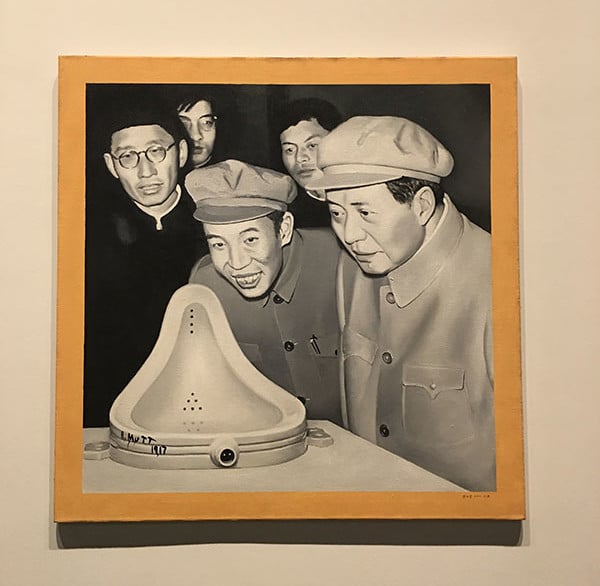
Shi Xinning, Duchamp Retrospective Exhibition in China (2000-2001).
Image: artnet News
Larry Bell in a Hong Kong Mall
Light and Space artist Larry Bell was commissioned to create an installation at the upscale shopping mall Pacific Place (and a smaller one at the very chic Cafe Gray Bar at The Upper House). Presented by United Talent Agency Fine Arts and Swire Properties, “Pacific Red,” consists of three large cubes of varying shades of red glass with smaller cubes within each one.
Hollywood agent Josh Roth, who heads up UTA Fine Arts, was on hand at the after-party on the night of its unveiling, to show us around.

Larry Bell, Pacific Red.
Image: artnet News
“Red is his favorite color,” said Roth with childlike exuberance looking over the balcony at Pacific Place out to the marbled expanse of the lower floor where Bell’s cubes were placed like three gelatinous cubes of Jell-O on a taupe carpet. “He had always wanted to make these glass cubes this size and in this color.”
Roth explained that each panel weighs 400 pounds, making each cube almost three-and-a-half tons of glass. “We had ten people working around the clock for three days.”
And though he claimed to be on the verge of a heart-attack during the installation, he was clearly thrilled. “This is art historical,” he said. “It’s also Art Basel, the preeminent art fair that gets the biggest international crowd. At the end of the day the only thing that matters is that Larry’s happy. The other thing that matters,” he said gesturing to the nearby entrance to the MTR station, Hong Kong’s mass transit system, “is that a lot of people see it.”
The clean lines of Bell’s cubes, and the work’s shiny translucent surfaces, not to mention its reportedly hefty cost (though I don’t, in fact, know its actual cost—that UTA and Swire Properties couldn’t cough up enough to produce and ship an extra glass panel or two as a back-up in case one broke says something) perfectly reflected the glass-steel-and-marble slickness of this and every mall I visited in Hong Kong. It’s a great piece of public art for this space—visually stunning but accessible to anyone. Given how many people pouring out of the subway see it every day, its sheer coolness is sure to convert some of them into art lovers.
Bell, who Roth said makes all of his glass in Van Nuys California, near where the artist grew up in the valley, loved the idea of “bringing this product of Van Nuys to Hong Kong.”
“He said a funny thing recently,” Roth recounted about Bell. “He said, ‘I think this is probably the first time that something from Van Nuys has been in this mall.'”
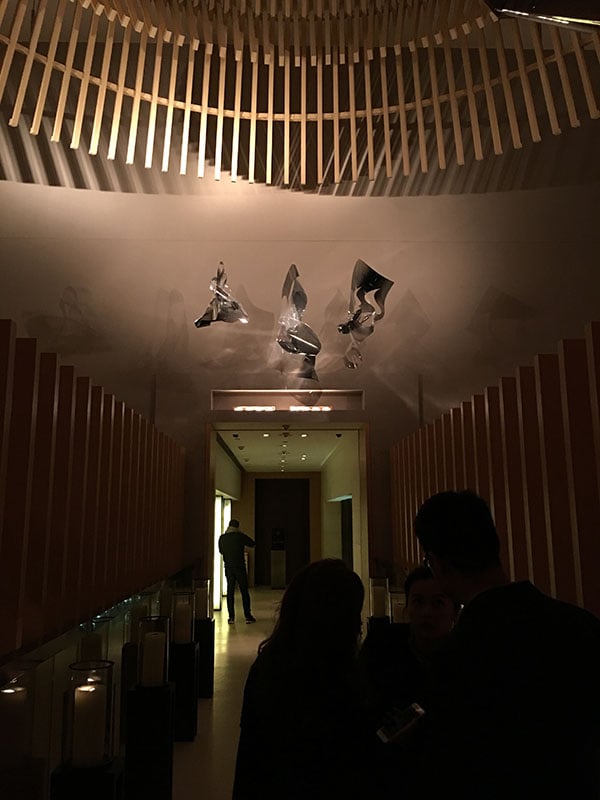
Larry Bell’s “Light Knots” installation at Cafe Gray Bar at the Upper House.
Image: artnet News
“Hack Space” at the K11 Pop-Up Space
While perusing the show “Hack Space,” curated by Hans Ulrich Obrist and Amira Gad, we ran into Adrian Cheng, the founder of the K11 Art Foundation. The show presents work by Simon Denny and 11 contemporary Chinese artists exploring the way space and infrastructure can be radically adapted to innovate and solve problems.
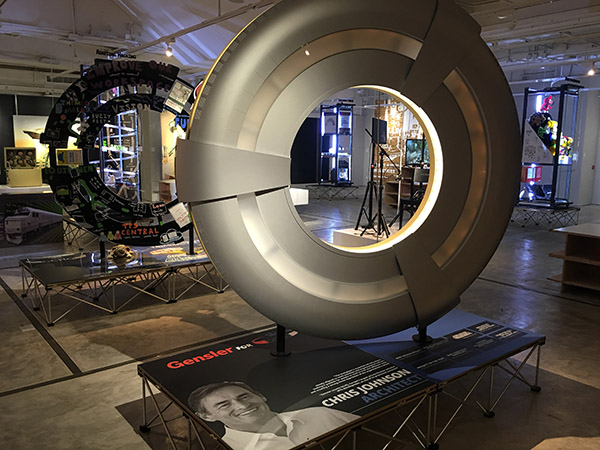
“The show is about hacking culture,” Cheng told us. “The hack ethos originates with a group of MIT students in the 1940s, a hack club. It’s about open-mindedness, open source, decentralization, it’s about how to innovate and to progress. At the time they were trying to create a new railway system.”
Cheng talked about the difference between “black hat” hackers and “white hat” hackers, the black hat being the kind popularized in the media–like those violating computer security for personal gain.
“White hat,” he explained in contrast, “is about how you innovate and progress, and break boundaries from architecture to hacking identities. A space itself can be hacked.”
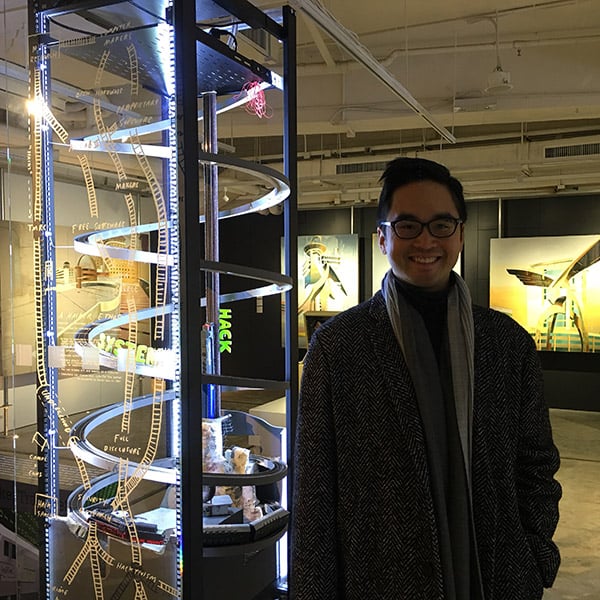
Adrian Cheng.
Cheng’s K11 Art Foundation brought Obrist and Denny to China. Denny had had a show at the Serpentine. “We thought it would be great,” he said, “to have a dialogue on the new progressive movement of hacking.”
Gallery Openings and Around Town
While in other cities, galleries are spread out across zipcodes, many of the biggest galleries in Hong Kong are concentrated in one building, the historic Beaux-Arts Pedder building. And Monday night, they held their openings. Pace, Gagosian, Pearl Lam, Lehmann Maupin opened their doors. And elsewhere around town, there were dinners, events, and parties coinciding with the main event. Here are some pictures documenting it:
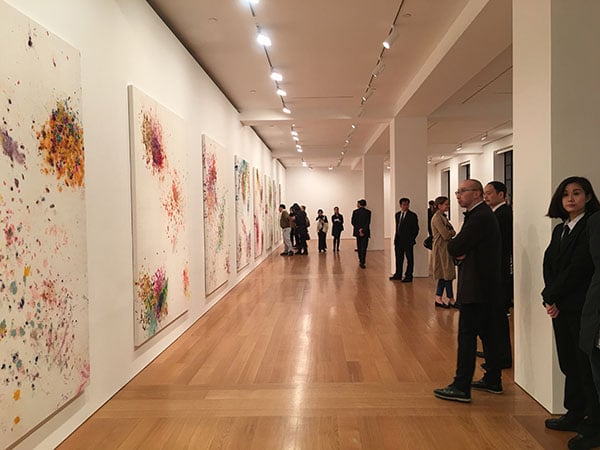
Dan Colen at Gagosian.
Image: artnet News
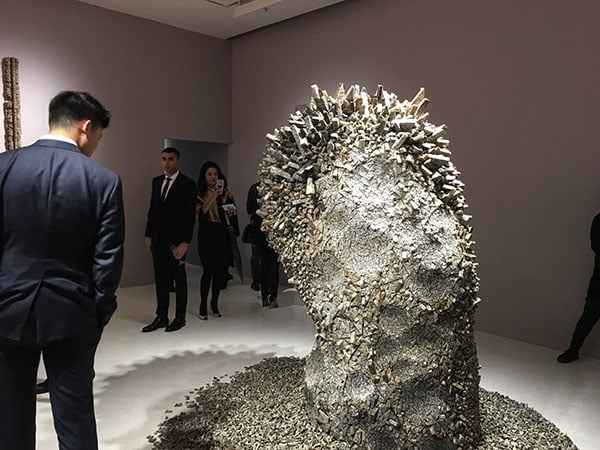
Pearl Lam Gallery.
Image: artnet News
Tracy Emin’s show “I Cried Because I Love You” opened at Lehmann Maupin Hong Kong, also in the Pedder building. Here she is with GQ editor Dylan Jones.